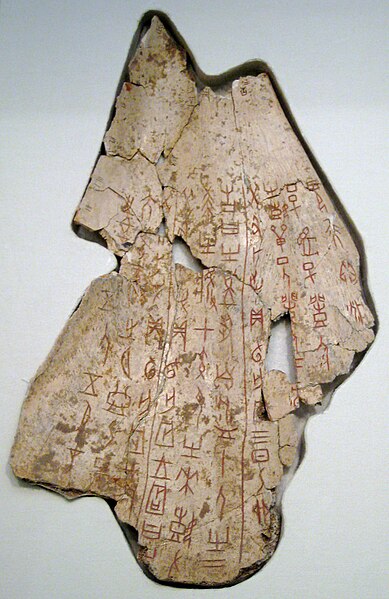Astronomy in China has a long history stretching from the Shang dynasty, being refined over a period of more than 3,000 years. The ancient Chinese people have identified stars from 1300 BCE, as Chinese star names later categorized in the twenty-eight mansions have been found on oracle bones unearthed at Anyang, dating back to the mid-Shang dynasty. The core of the "mansion" system also took shape around this period, by the time of King Wu Ding.
Wide view of the Crab Nebula.
A method of making observation instruments at the time of the Qing dynasty
Celestial globe from the Qing dynasty
Early European drawing of the Beijing Ancient Observatory.
Wu Ding ; personal name Zi Zhao (子昭), was a king of the Chinese Shang dynasty who ruled the central Yellow River valley c. 1250 – 1200 BCE. He is the earliest figure in Chinese history mentioned in contemporary records. The annals of the Shang dynasty compiled by later historians were once thought to be little more than legends until oracle script inscriptions on bones dating from his reign were unearthed at the ruins of his capital Yin in 1899. Oracle bone inscriptions from his reign have been radiocarbon dated to 1254–1197 BC ±10 years, closely according with regnal dates derived by modern scholars from received texts, epigraphic evidence, and astronomical calculations.
Portrait of King Wu Ding of Shang from Sancai Tuhui
Ox scapula recording divinations by Zhēng 爭 in the reign of King Wu Ding
Fu Yue, the second Chancellor of Wu Ding. He is believed to be identical to Hou Que, whose name was presented in oracle bones.
The Shang chariot at Yinxu.








